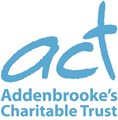Story
Aims of the FaceForward partnership:
1- To address major facial disfigurements/deformities in the refugee population which will enable refugees to return to healthy interactions in society.
2- To provide basic oral care and oral health education to empower a sustainable improvement in oral health.
3- To set up a collaborative partnership between Cambridge and Jordan and promote the full scope of oral and maxillofacial training in Jordan.
Background:
Jordan, officially the Hashemite Kingdom of Jordan, is a country in the Levant region of the Middle East. Jordan is boarded by Saudi Arabia, Iraq, Syria, Israel and Palestine (West Bank). It is classified as a country of “high human development” with an “upper middle income” economy. A lack of natural resources and regional turmoil have hampered economic growth. Regional instability has also led to a large influx of refugees.
The capital of Jordan is Amman. 98% of the Jordanian population identify as Arab whilst remaining ethnic groups are Circassian, Chechens and Armenians. 95% are Muslim, 4% are Christian and 1% are Druze.
There are currently 761,100 registered refugees (not including the Palestine refugees under UNRWA’s mandate). Registered refugees come from 57 nationalities. 87% live in urban areas whilst 17% live in three camps (Zaatari, Azraq and Emirati Jordanian Camp). In 2018 there was a $49.5M funding deficit to address the needs of the refugee population in Jordan. (source: UNHCR)
Refugees have mainly escaped war in their home countries. Armed conflicts have led to devasting injuries including those caused by explosives, shrapnel and blast injuries. Regarding maxillofacial trauma, 62% of injuries occurred in civilian populations with the majority (52%) presenting with polytrauma. The mandible was injured in 67%, the maxilla in 61% and the orbitofrontal region in 46%). Away from conflict related injuries, maxillofacial injuries are common in the MENA region and are mainly caused by road traffic accidents.
Away from trauma, the incidence of cleft lip and palate was found to be higher in children born during the ISIS period in affected nations (4 in 1000 live births). Authors have suggested this rise is secondary to reported chemical warfare. Recent conflict has also meant that many have had suboptimal reconstruction of their congenital defects.
Head and neck cancer is the 6th most common cancer worldwide with oral and oropharyngeal cancer expected to rise in incidence in the middle east over the coming decade. The exact incidence of oral cancer in the middle east is difficult to ascertain due to the heterogenous population and the existence of only 4 national cancer registries in the region (Jordan being one of them). Authors have noted that presentations of head and neck cancer in certain countries of the middle east tend to be at a more advanced stage than when compared to developed nations.
The general oral health status of the refugee population is tragic. 75% of 6-year-old Syrian refugees were found to have untreated dental caries. Left untreated this can lead to pain and potentially life threatening cervicofacial infections.
Images
Planet Labs, Inc. via Wikimedia Commons
UN Women/Christopher Herwig
UN Photo/Sahem Rababah

